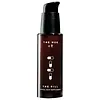What's inside
What's inside
 Key Ingredients
Key Ingredients

 Benefits
Benefits

 Concerns
Concerns

 Ingredients Side-by-side
Ingredients Side-by-side

Water
Skin ConditioningGlycerin
HumectantIsoamyl Laurate
EmollientGalactoarabinan
Sclerotium Gum
Emulsion StabilisingVaccinium Myrtillus Fruit Extract
Skin ConditioningGlycolic Acid
BufferingLactic Acid
BufferingPolysorbate 20
EmulsifyingPhenoxyethanol
PreservativeSodium Hydroxide
BufferingCitrus Limon Fruit Extract
MaskingCaffeine
Skin ConditioningSaccharum Officinarum Extract
MoisturisingDipotassium Glycyrrhizate
HumectantSodium PCA
HumectantTetrasodium Glutamate Diacetate
Vitis Vinifera Fruit Extract
Skin ConditioningAnanas Sativus Fruit Extract
Skin ConditioningPassiflora Edulis Fruit Extract
Skin ConditioningButylene Glycol
HumectantCitrus Aurantium Dulcis Fruit Extract
MaskingAlcohol Denat.
AntimicrobialEthylhexylglycerin
Skin ConditioningTerminalia Ferdinandiana Fruit Extract
AntioxidantNymphaea Alba Flower Extract
Skin ConditioningAcer Saccharum Extract
Skin ConditioningLeuconostoc/Radish Root Ferment Filtrate
AntimicrobialHyaluronic Acid
HumectantSodium Benzoate
MaskingCentella Asiatica Extract
CleansingPotassium Sorbate
PreservativeDisodium EDTA
Sodium Bisulfite
AntioxidantWater, Glycerin, Isoamyl Laurate, Galactoarabinan, Sclerotium Gum, Vaccinium Myrtillus Fruit Extract, Glycolic Acid, Lactic Acid, Polysorbate 20, Phenoxyethanol, Sodium Hydroxide, Citrus Limon Fruit Extract, Caffeine, Saccharum Officinarum Extract, Dipotassium Glycyrrhizate, Sodium PCA, Tetrasodium Glutamate Diacetate, Vitis Vinifera Fruit Extract, Ananas Sativus Fruit Extract, Passiflora Edulis Fruit Extract, Butylene Glycol, Citrus Aurantium Dulcis Fruit Extract, Alcohol Denat., Ethylhexylglycerin, Terminalia Ferdinandiana Fruit Extract, Nymphaea Alba Flower Extract, Acer Saccharum Extract, Leuconostoc/Radish Root Ferment Filtrate, Hyaluronic Acid, Sodium Benzoate, Centella Asiatica Extract, Potassium Sorbate, Disodium EDTA, Sodium Bisulfite
Ingredients Explained
These ingredients are found in both products.
Ingredients higher up in an ingredient list are typically present in a larger amount.
Glycerin is already naturally found in your skin. It helps moisturize and protect your skin.
A study from 2016 found glycerin to be more effective as a humectant than AHAs and hyaluronic acid.
As a humectant, it helps the skin stay hydrated by pulling moisture to your skin. The low molecular weight of glycerin allows it to pull moisture into the deeper layers of your skin.
Hydrated skin improves your skin barrier; Your skin barrier helps protect against irritants and bacteria.
Glycerin has also been found to have antimicrobial and antiviral properties. Due to these properties, glycerin is often used in wound and burn treatments.
In cosmetics, glycerin is usually derived from plants such as soybean or palm. However, it can also be sourced from animals, such as tallow or animal fat.
This ingredient is organic, colorless, odorless, and non-toxic.
Glycerin is the name for this ingredient in American English. British English uses Glycerol/Glycerine.
Learn more about GlycerinPolysorbate 20 is made by combining ethoxylation of sorbitan, ethylene oxide, and lauric acid. It is a mild cleansing agent, surfactant, and emulsifier.
As a surfactant, it helps collect dirt and oils for washing. Emulsifiers prevent oils and water from separating.
Polysorbate 20 also adds scent to a product. Since it is made using sorbitol, it has a sweet scent. Sorbitol can also be found in fruits such as apples and peaches.
The lauric acid used to create Polysorbate 20 is often derived from coconuts.
Polysorbate 20 may not be fungal acne safe.
Learn more about Polysorbate 20Potassium Sorbate is a preservative used to prevent yeast and mold in products. It is commonly found in both cosmetic and food products.
This ingredient comes from potassium salt derived from sorbic acid. Sorbic acid is a natural antibiotic and effective against fungus.
Both potassium sorbate and sorbic acid can be found in baked goods, cheeses, dried meats, dried fruit, ice cream, pickles, wine, yogurt, and more.
You'll often find this ingredient used with other preservatives.
Learn more about Potassium SorbateSodium Benzoate is a preservative. It's used in both cosmetic and food products to inhibit the growth of mold and bacteria. It is typically produced synthetically.
Both the US FDA and EU Health Committee have approved the use of sodium benzoate. In the US, levels of 0.1% (of the total product) are allowed.
Sodium benzoate works as a preservative by inhibiting the growth of bacteria inside of cells. It prevents the cell from fermenting a type of sugar using an enzyme called phosphofructokinase.
It is the salt of benzoic acid. Foods containing sodium benzoate include soda, salad dressings, condiments, fruit juices, wines, and snack foods.
Studies for using ascorbic acid and sodium benzoate in cosmetics are lacking, especially in skincare routines with multiple steps.
We always recommend speaking with a professional, such as a dermatologist, if you have any concerns.
Learn more about Sodium BenzoateWater. It's the most common cosmetic ingredient of all. You'll usually see it at the top of ingredient lists, meaning that it makes up the largest part of the product.
So why is it so popular? Water most often acts as a solvent - this means that it helps dissolve other ingredients into the formulation.
You'll also recognize water as that liquid we all need to stay alive. If you see this, drink a glass of water. Stay hydrated!
Learn more about Water